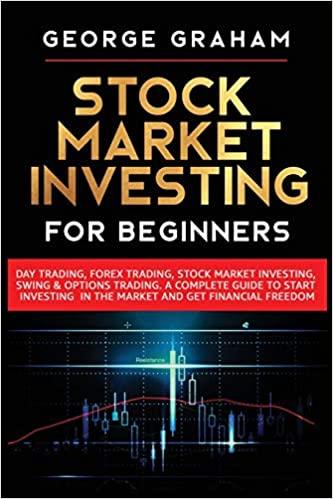Answered step by step
Verified Expert Solution
Question
1 Approved Answer
Kabir Muhammad is a technology stock analyst for Spartan Portfolios, Inc. He is considering adding one or more stocks shown in Exhibit 1 to Spartan's
Kabir Muhammad is a technology stock analyst for Spartan Portfolios, Inc. He is considering adding one or more stocks shown in Exhibit to Spartan's growth portfolios. Exhibit shows Muhammad's estimates of expected return for the three stocks as well as inputs needed to calculate the beta used in the Capital Asset Pricing Model CAPM For his work with the CAPM, Muhammad assumes the expected equity risk premium to be and uses the yield on day Tbills, currently as a proxy for the riskfree rate.
Exhibit Estimates of Expected Return and Data Needed to Calculate CAPM Beta
Expected Return Correlation with the S&P Standard Deviation of Returns
Clearcut Technology
Bearcat Semiconductor
Spinner Microdevices
S&P
Muhammad shares his work with his supervisor, Aimee Blanchet, CFA. He tells her any security choices he makes for the growth portfolios will be based on expected alpha calculations using the CAPM to estimate required return. After reviewing Exhibit Blanchet asks Muhammad why he doesn't forego the expected alpha calculations and simply add Bearcat Semiconductor to the portfolio because of its higher expected return. Muhammad offers the following reasons for his approach:
Reason Expected return estimates are subject to forecast error.
Reason Security selection should consider the risk the security adds to the portfolio as well as return potential.
Reason Evidence shows expected return estimates based on the CAPM are highly reliable.
After listening to Muhammad's reasoning, Blanchet wonders if a different pricing model would yield different security choices. She asks Muhammad to repeat his analysis, but this time use the FamaFrench Factor Model to determine required return. She asks Muhammad to use the risk premia and riskfree data shown in Exhibit as inputs.
Exhibit FamaFrench Risk Premia and RiskFree Rate Data
Risk Premia Estimates:
Market Factor
Size Factor
Value Factor
RiskFree Rate Estimate:
Yield on day Tbill
Muhammad agrees to use Blanchet's data. He then uses multiple regression analysis to estimate the FamaFrench Factor Model factor sensitivities which appear in Exhibit
Exhibit FamaFrench Factor Sensitivities
Market Factor Size Factor Value Factor
Clearcut Technology
Bearcat Semiconductor
Spinner Microdevices
A few days later, Muhammad finishes his analysis and shares it with Blanchet. She notes the conflicting results of the two approaches and asks Muhammad which approach he favors. Muhammad tells Blanchet he now favors the FamaFrench Factor Model approach for the following reasons:
Reason Evidence shows the FamaFrench Factor Model is a better predictor of expected return than the CAPM.
Reason The inclusion of the size factor and the value factor into the FamaFrench Factor Model is based on both being wellknown market anomalies.
Reason The FamaFrench Factor Model is the bestknown statistical factor model.
Blanchet then expresses her concern about Muhammad's risk premia estimates in Exhibit One of her concerns is market valuation and she tells Muhammad the current PE for the S&P is versus the median of since yearend She asks Muhammad to provide his estimates of expected return which appear in Exhibit
Exhibit Estimates of Average Annual Expected Return over the Next Years
Dividend Yield Valuation Change Earnings Growth Expected Return
Clearcut Technology
Bearcat Semiconductor
Spinner Microdevices
S&P
Muhammad tries to mitigate some of Blanchet's concerns. He offers the following reasons for optimism regarding the stocks under consideration:
Reason Growth stocks have outperformed value stocks in recent years.
Reason Smallcap stocks have outperformed largecap stocks in recent years.
Reason An easing of monetary policy would lead to a decline in market interest rates which, in turn, would have a positive impact on the future market risk premium.
After further consideration, Blanchet tells Muhammad he can add his favored stocks to the portfolio.
Question point
Based on the data in Exhibit which of the three stocks has the most market risk as measured by its CAPM beta?
Question options:
Clearcut Technology
Bearcat Semiconductor
Spinner Microdevices
Question point
Based on the data in Exhibit which of the three stocks is the most likely to closely track the returns of the S&P
Question options:
Clearcut Technology
Bearcat Semiconductor
Spinner Microdevices
Question point
Based on the data in Exhibit and using CAPM to determine required return, the expected al
Step by Step Solution
There are 3 Steps involved in it
Step: 1

Get Instant Access to Expert-Tailored Solutions
See step-by-step solutions with expert insights and AI powered tools for academic success
Step: 2

Step: 3

Ace Your Homework with AI
Get the answers you need in no time with our AI-driven, step-by-step assistance
Get Started


